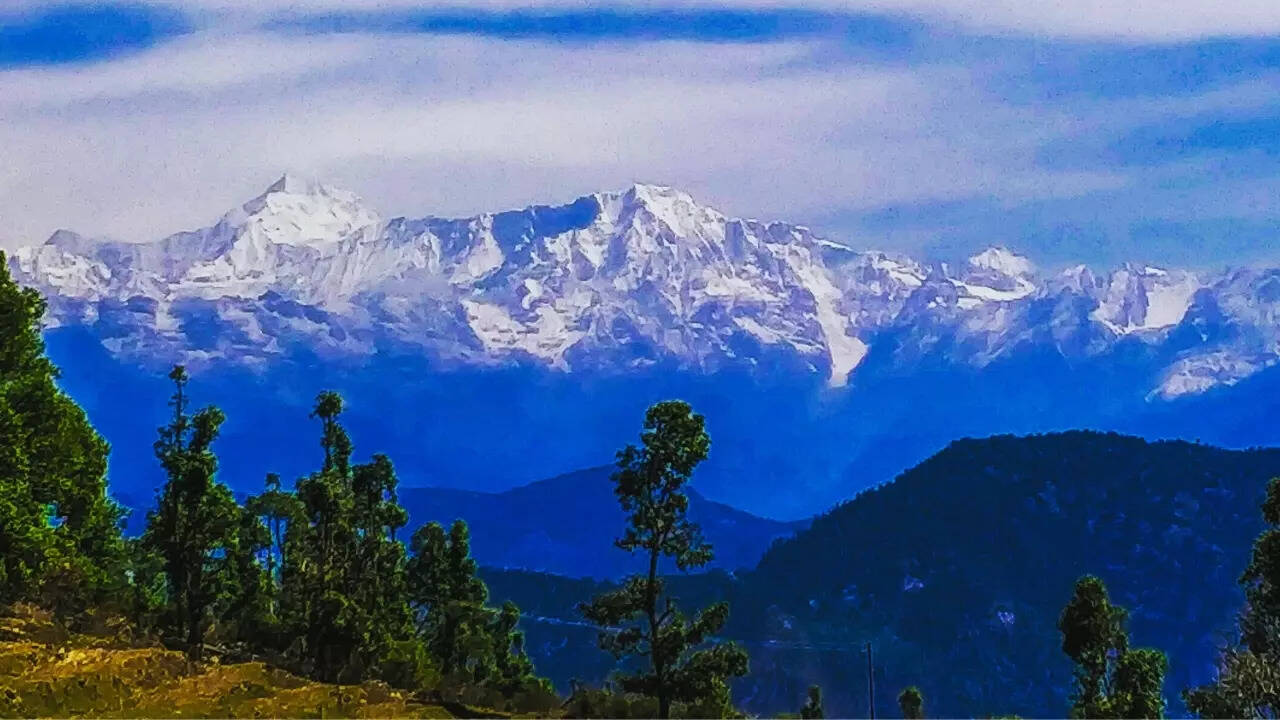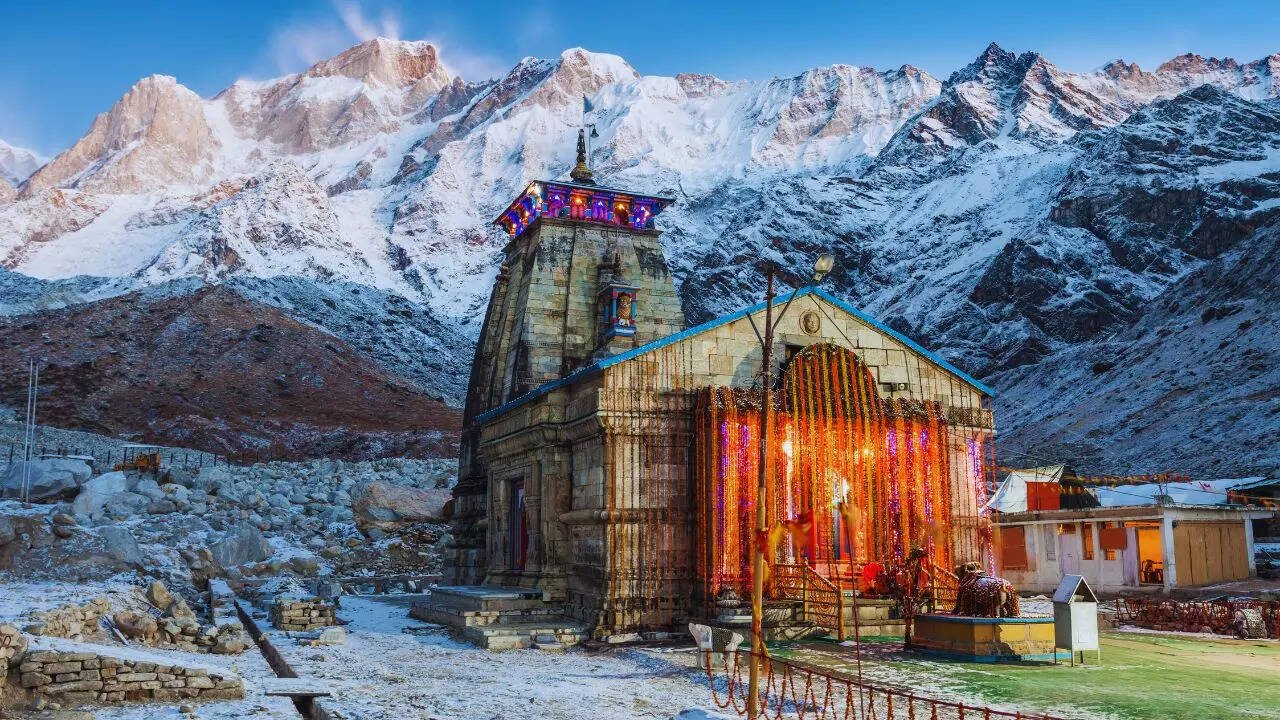What happened in 1965 at Nanda Devi that shook the world, and changed the mountain’s future forever? |

Ever wondered why no one is allowed to climb Nanda Devi? And by ‘no one’ we mean travellers and adventure seekers. Nestled in the rugged Garhwal Himalayas of Uttarakhand, Nanda Devi rises to 7,816 metres (25,646 ft) and demands respect for its formidable terrain, ecological fragility and cultural significance. But looking at a certain chapter in history, one wonders whether ecological conservation and cultural significance are the only reasons why no one is allowed to climb this mountain, of course with the exception of army operations and expeditions led by the Indian Mountaineering Foundation.
1965: The year that changed the course of history for Nanda Devi
Before we delve into what happened on the mountain in 1965, we need to go back a little, to the early 1960s, when the geopolitical situation in Asia was tense. Xinjiang in China had witnessed nuclear tests; India was still reeling from its 1962 war with China; and the United States, embroiled in Cold-War rivalry, was seeking vantage points to monitor Chinese missile and nuclear activity. An idea emerged: to install a remote-monitoring station high in the Himalayas, from where telemetry, seismic signals or other data related to Chinese nuclear tests could be intercepted. But given the altitude, any conventional power sources would have been impractical. So enter the idea of a radioisotope thermoelectric generator (RTG) powered by plutonium capsules. The nuclear power that people thought was needed the most during that time. Nanda Devi was chosen as the best location for this espionage mission. This mission was spearheaded by Indian mountaineer and Navy veteran Captain Manmohan Singh Kohli, in collaboration with the Central Intelligence Agency (CIA) of the U.S. and India’s Intelligence Bureau (IB). In September 1965, the expedition established its base camp in the Nanda Devi Sanctuary. The equipment included a heavy RTG (weighing approximately 50-60 kg) with plutonium fuel capsules, antennae, transceivers and more. As per the plan, the sherpas would carry the device up via several camps to a ridge near the summit. Once placed, a summit team (two Indians, two Americans) would install it. As per plan, in mid-October, the mission reached “Camp IV” on the southeast ridge. But then the unthinkable happened.

Nanda Devi, as seen from Uttarakhand
On 16 October 1965 severe weather hit. A blizzard set in; and an avalanche threat rose. It was too dangerous to continue the mission, and Captain Kohli called off the climb to the summit. With the intention to come back and continue installation of the device once the blizzard died down, the team left the equipment, including the plutonium capsules, on the mountain. By the time the team could go back up again, it was already 1966, the next year. To everyone’s absolute horror, the device was gone. Missing. Most probably, nature played its part, and snow, ice and glacial movements carried the device to an unknown place. Now, with the device missing, the team had only one thing left to do – abort the mission. The disappearance of a plutonium-powered device on a glacier, draining into the Rishi Ganga and then the Ganga basin, raised serious environmental concerns. Plutonium has a long‐term radioactive life, and contamination is a real threat.
So what changed for Nanda Devi?
The incident was not publicly acknowledged in full until years later. Meanwhile, the surrounding area, especially the Nanda Devi Sanctuary, became off-limits to many mountaineers and trekkers. Foreign expeditions were restricted; the mountain’s climbing routes were tightly controlled. Finally, in 1983, climbing was officially banned, and the region was declared sensitive both for ecology and security. So one can say that the failed mission, in essence, contributed to the mountain being closed to general mountaineering.
The unsolved mystery…
Unfortunately, the device or the plutonium capsules have never been recovered, despite multiple expeditions. While no major radioactive leak has been confirmed, the possibility remains from all those lost plutonium capsules. This entire mission was highly confidential back then, and even now, one can expect that not everything is out in the open for all to know. But whatever the world knows now, is all available on very public platforms. The mission to Nanda Devi in 1965 was audacious: carry a plutonium-powered spy device up one of India’s highest peaks, plant it, monitor Chinese nuclear tests, and do so in one of the most hostile terrains on Earth. It ended in retreat, mystery and ecological angst. But more than that, it changed how an entire mountain was treated, its routes closed, its sanctuary status heightened, its story enriched with cold-war intrigue and conservation urgency.For climbers, policy-makers and history-seekers alike, Nanda Devi stands as a mountain that refused to be just scaled.
var _mfq = window._mfq || [];
_mfq.push([“setVariable”, “toi_titan”, window.location.href]);
!(function(f, b, e, v, n, t, s) {
function loadFBEvents(isFBCampaignActive) {
if (!isFBCampaignActive) {
return;
}
(function(f, b, e, v, n, t, s) {
if (f.fbq) return;
n = f.fbq = function() {
n.callMethod ? n.callMethod(…arguments) : n.queue.push(arguments);
};
if (!f._fbq) f._fbq = n;
n.push = n;
n.loaded = !0;
n.version = ‘2.0’;
n.queue = [];
t = b.createElement(e);
t.async = !0;
t.defer = !0;
t.src = v;
s = b.getElementsByTagName(e)[0];
s.parentNode.insertBefore(t, s);
})(f, b, e, ‘https://connect.facebook.net/en_US/fbevents.js’, n, t, s);
fbq(‘init’, ‘593671331875494’);
fbq(‘track’, ‘PageView’);
};
function loadGtagEvents(isGoogleCampaignActive) {
if (!isGoogleCampaignActive) {
return;
}
var id = document.getElementById(‘toi-plus-google-campaign’);
if (id) {
return;
}
(function(f, b, e, v, n, t, s) {
t = b.createElement(e);
t.async = !0;
t.defer = !0;
t.src = v;
t.id = ‘toi-plus-google-campaign’;
s = b.getElementsByTagName(e)[0];
s.parentNode.insertBefore(t, s);
})(f, b, e, ‘https://www.googletagmanager.com/gtag/js?id=AW-877820074’, n, t, s);
};
function loadSurvicateJs(allowedSurvicateSections = []){
const section = window.location.pathname.split(‘/’)[1]
const isHomePageAllowed = window.location.pathname === ‘/’ && allowedSurvicateSections.includes(‘homepage’)
const ifAllowedOnAllPages = allowedSurvicateSections && allowedSurvicateSections.includes(‘all’);
if(allowedSurvicateSections.includes(section) || isHomePageAllowed || ifAllowedOnAllPages){
(function(w) {
function setAttributes() {
var prime_user_status = window.isPrime ? ‘paid’ : ‘free’ ;
var geoLocation = window?.geoinfo?.CountryCode ? window?.geoinfo?.CountryCode : ‘IN’ ;
w._sva.setVisitorTraits({
toi_user_subscription_status : prime_user_status,
toi_user_geolocation : geoLocation
});
}
if (w._sva && w._sva.setVisitorTraits) {
setAttributes();
} else {
w.addEventListener(“SurvicateReady”, setAttributes);
}
var s = document.createElement(‘script’);
s.src=”https://survey.survicate.com/workspaces/0be6ae9845d14a7c8ff08a7a00bd9b21/web_surveys.js”;
s.async = true;
var e = document.getElementsByTagName(‘script’)[0];
e.parentNode.insertBefore(s, e);
})(window);
}
}
window.TimesApps = window.TimesApps || {};
var TimesApps = window.TimesApps;
TimesApps.toiPlusEvents = function(config) {
var isConfigAvailable = “toiplus_site_settings” in f && “isFBCampaignActive” in f.toiplus_site_settings && “isGoogleCampaignActive” in f.toiplus_site_settings;
var isPrimeUser = window.isPrime;
var isPrimeUserLayout = window.isPrimeUserLayout;
if (isConfigAvailable && !isPrimeUser) {
loadGtagEvents(f.toiplus_site_settings.isGoogleCampaignActive);
loadFBEvents(f.toiplus_site_settings.isFBCampaignActive);
loadSurvicateJs(f.toiplus_site_settings.allowedSurvicateSections);
} else {
var JarvisUrl=”https://jarvis.indiatimes.com/v1/feeds/toi_plus/site_settings/643526e21443833f0c454615?db_env=published”;
window.getFromClient(JarvisUrl, function(config){
if (config) {
const allowedSectionSuricate = (isPrimeUserLayout) ? config?.allowedSurvicatePrimeSections : config?.allowedSurvicateSections
loadGtagEvents(config?.isGoogleCampaignActive);
loadFBEvents(config?.isFBCampaignActive);
loadSurvicateJs(allowedSectionSuricate);
}
})
}
};
})(
window,
document,
‘script’,
);
Source link




